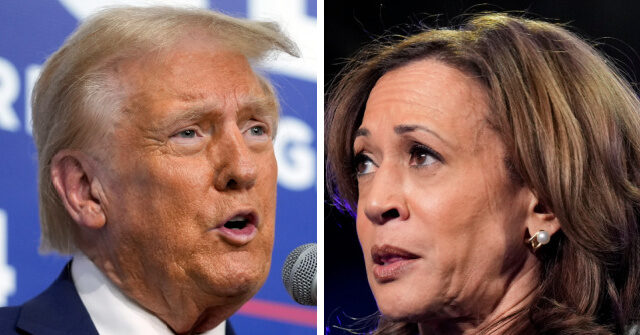As the presidential election approaches, a recent poll commissioned by the New York Post shows a tight race between former President Donald Trump and Vice President Kamala Harris, with both candidates locked at 49 percent each. This marks a notable shift from the last poll released in October, where Harris enjoyed a 4-point lead over Trump. The new poll indicates that 2 percent of respondents are undecided or leaning towards other candidates, underscoring the election’s close nature. The competitive dynamics suggest that Trump could potentially secure a win in the Electoral College, despite previous instances where a candidate lost the popular vote but won the presidency, as seen in the 2016 election when Trump defeated Hillary Clinton.
The polling data reveals stark generational divides in support for the candidates. Among younger voters aged 18 to 34, Harris leads significantly with a 20-point advantage, capturing 59 percent of this demographic’s support compared to Trump’s 39 percent. Conversely, Trump appeals more to older voters, those aged 55 and older, leading with 56 percent to Harris’s 42 percent. This age disparity could skew the results towards Trump, as older voters tend to represent a larger portion of the electorate. Gender dynamics also play a significant role; women favor Harris at 53 percent compared to Trump’s 46 percent, while the men’s vote tilts in Trump’s favor, as he leads with 51 percent to 46 percent among male voters.
Reasons for Trump’s support among his base are also revealing. A significant majority, 58 percent, of Republican voters cite an improved quality of life during Trump’s presidency as a key reason for their support. Additionally, around 30 percent believe that he will revitalize the economy, and 26 percent support Trump due to his stance on immigration, particularly his aim to control illegal immigration and deport those present in the country illegally. When it comes to perceptions of who can enhance Americans’ quality of life, the candidates are again neck and neck, tied at 44 percent, which reflects a divided electorate.
Despite these tight margins, personal sentiments show a lean towards Trump’s time in office. A survey indicates that 48 percent of respondents feel that Trump’s administration was better for them, in contrast to 37 percent who support the notion that Biden’s presidency benefited them more. This implies that individual experiences could play a significant role in swaying undecided voters right before the election, highlighting a crucial element of voter psychology that could influence the final outcome.
As of the latest updates, Trump holds a slight average lead of 0.1 points over Harris, according to RealClearPolitics. This presents a notable change from the same period in the previous elections; for instance, during the 2020 election, Biden had a 6.9-point advantage over Trump, and in 2016, Clinton led by 3.2 points. These historical comparisons amplify the sense of urgency and uncertainty surrounding the current election, reflecting how voters’ sentiments and political dynamics can shift rapidly in a competitive race.
This recent poll, conducted by Leger for the New York Post, surveyed 1,044 Americans online from October 31 through November 3, with a margin of error of ±3 percentage points. With such close statistics and multiple influencing factors—demographics, issues of personal concern, and larger national narratives—the outcome of the upcoming election promises to be crucial, potentially redefining the political landscape for the years to come. The results underscore a deeply polarized electorate, a trend that continues to shape American politics as it advances toward a highly contested decision day.

